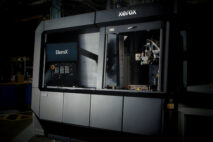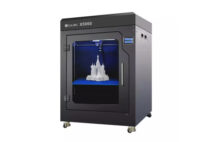 Engineering is one of the bright areas in an otherwise flat market for 3D printers. Businesses are increasingly using the technology for R&D work, specialized part production, prototyping, and modeling. With 3D printing, engineers and designers can cut development time and costs, and they can create items that simply cannot be produced using traditional manufacturing methods. In their recent earnings reports, OEM market leaders Stratasys and 3D Systems both cited engineering as a growth area in which they plan to invest.
Engineering is one of the bright areas in an otherwise flat market for 3D printers. Businesses are increasingly using the technology for R&D work, specialized part production, prototyping, and modeling. With 3D printing, engineers and designers can cut development time and costs, and they can create items that simply cannot be produced using traditional manufacturing methods. In their recent earnings reports, OEM market leaders Stratasys and 3D Systems both cited engineering as a growth area in which they plan to invest.
The enthusiastic overflow crowds at the Additive Manufacturing + 3D Printing (AM3D) conference that was recently held in Boston support the notion that the engineering market for 3D printing is poised to explode. The event is produced by the American Society of Mechanical Engineers (ASME), a professional organization that helps the global engineering community develop realistic solutions to challenges throughout the world.
ASME has about 140,000 members worldwide in 151 countries. About 30,000 are students, so a good portion of the membership is learning state-of-the-art skills like 3D printing. Of the 250 AM3D attendees, 128 were students.
One of ASME’s goals is to help its members understand key advanced manufacturing technologies that change the concept of design. The organization launched AM3D to show its members how to use the technology beyond prototyping to actual end-use part production, or as the event tagline states, to show the “engineering behind additive manufacturing.”
The speaker lineup consisted of a solid mix of senior-level engineers from the industry and experts from academia, service providers, OEMs, and standards bodies. Sessions covered everything from 3D printing (or additive manufacturing, which seemed to be the preferred term among engineers) technology basics to materials science.
Several sessions focused on the lack of 3D printing standards, particularly a standard that describes items to be printed in a way that a machine understands. Traditional CAD software is intended to help people understand a design. With such a standard, much of the production and design process can be automated. For example, a user might enter a set of requirements and then the software produces a set of possible designs that the designer or engineer can evaluate and modify. ASME is involved in the standards process and has a fellow at America Makes, a public/private institute that promotes innovation in additive manufacturing, to evolve the group’s Y14.5 drafting standard.
Just because engineers are smart people who understand technology and materials doesn’t mean they all have their heads wrapped around 3D printing. A number of AM3D sessions served as introductions to using the technology, as well as its capabilities and limitations. “The learning curve is substantial [for engineers],” said Timothy Simpson, ASME’s chairman for the AM3D conference and professor of mechanical and industrial engineering at Pennsylvania State University. “Our goal is to help them understand what they need to know [about additive manufacturing].” He added that engineers have to make a few parts before they can use the technology well.
Listening to the speakers and attendees, it became clear that no single 3D printing technology can handle all the different applications typically found in any sizable engineering group. For example, AM3D sponsor Keurig, which makes beverage-brewing systems, uses a wide range of 3D printing technology, including Fused Deposition Modeling (FDM) and stereolithography (SLA) systems. Each technology has different qualities and material capabilities, and they must be able to produce parts across a range of materials and durability, finish, size, and flexibility requirements.
Another common sentiment voiced at the event regarded the limited state of the 3D printing supply chain. Or, to paraphrase comments one speaker made, “What supply chain?” Engineers who use 3D printing are often frustrated with turnaround times for supplies, replacement parts, and equipment. A reseller said that he sometimes keeps an extra machine around just so he can have quick access to spare parts. “Only the big companies can afford to build a supply chain,” said Mr. Simpson. A robust supply chain is beyond the current capabilities of many of the smaller 3D OEMs.
Several speakers also mentioned a shortage of 3D printing technicians. Engineers, designers, and materials experts are all high-priced professionals who add value with their ideas and problem-solving solutions. The process of producing a part or model with 3D printing requires skill and is time-consuming. Companies don’t want the high-priced talent spending much time on it. Instead, they look for people who are technically adept at using 3D printing technology. One place they are looking is the maker community. “How do you create a pipeline [for the 3D printing talent pool]?” said Mr. Simpson. “Many see the maker movement as part of that pipeline.”
Next year’s AM3D event will be held August 21 to 23 in Charlotte, NC. ASME expects attendance to grow to 350. It is the only 3D printing event the organization has planned for the coming year.





